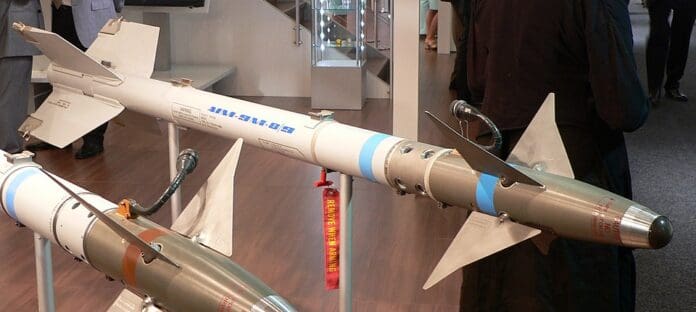
This post is also available in:
 עברית (Hebrew)
עברית (Hebrew)
Small, low-flying drones present a growing challenge for air defenses worldwide. These one-way attack UAVs, such as Iran’s Shahed-136, are difficult to detect and intercept due to their slow speed, minimal infrared signature, and low-altitude flight. Traditional air-to-air missiles, especially older variants like the AIM-9M Sidewinder, struggle to engage such targets effectively.
According to a recent report by the Foreign Policy Research Institute (FPRI), Israel has modified the seekers on its AIM-9M missiles, significantly improving their performance against these drones. While the report does not provide detailed technical specifications, the upgrades appear to enhance the missiles’ ability to track small, slow-moving targets in cluttered environments. This potentially includes adjustments to infrared or imaging sensors, software enhancements, or both, allowing the missile to distinguish drones from other objects on the ground.
These changes leverage Israel’s extensive experience in counter-drone operations, demonstrated most notably during Iran’s April 2024 drone and missile attacks. The improvements could extend the service life and utility of the widely available AIM-9M, providing a cost-effective solution for friendly air forces facing drone threats without requiring entirely new missile inventories.
Beyond Israel, these upgrades have broader defense implications. Armed forces operating older air-to-air missile stocks could adapt similar modifications to counter the proliferation of kamikaze-style drones in modern conflicts. For example, Ukraine employs AIM-9Ms on its Western-supplied F-16s to intercept incoming UAVs, while U.S. forces have pursued alternatives such as air-launched, laser-guided APKWS II rockets with proximity fuzes. Still, the Sidewinder’s improvements offer greater range and maneuverability, making it a versatile option against persistent drone threats.
The development underscores a broader trend: existing munitions are being adapted to address emerging aerial threats. By retrofitting legacy systems with modern seekers, operators can maintain relevance in contested environments, ensuring that even decades-old platforms like the AIM-9M remain effective against new classes of unmanned threats.

























